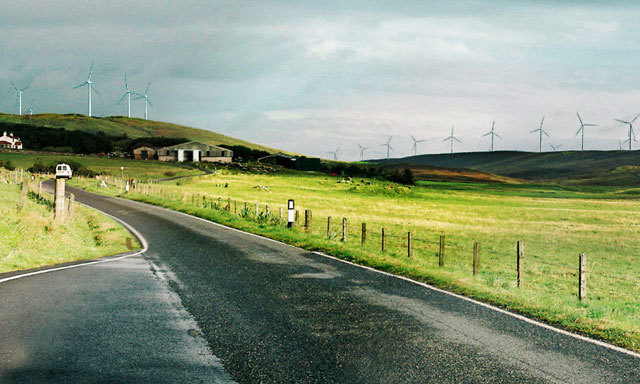
The 2017 Tory manifesto gave a generous nod in the direction of “the remote islands of Scotland”.
While subsidies for onshore wind were over, there was a commitment to “support” islands projects “where they will directly benefit local communities”.
It was widely acknowledged as well-intentioned recognition of the islands’ ambiguous status. By definition, islands are offshore and power generated has to be sent to the mainland. However, the technology is “onshore”, hence the need for exceptional treatment.
So far, so good. Planning for developments in Lewis, Shetland and, to a lesser extent, Orkney proceeded on the basis they would be eligible for subsidy through Contracts for Difference (CfD), the Dutch-auction system which determines which projects are guaranteed a minimum price for 15 years after coming into operation.
Last month, the great day dawned and the latest round of CfD awards was announced. Sure enough, island projects featured prominently in the successful bids, with four out of the 12 which made it through the system, UK-wide. The government congratulated itself on “delivering” its islands pledge.
Most reporting was in the same vein. Only those with knowledge of the realities recognised that the outcome did not guarantee construction of a single wind turbine on any of the three islands groups – Orkney, Shetland or the Western Isles. The gap between headline and reality, promises and delivery, was as wide as the Minch.
The reason is that there is no point building windfarms if there is nowhere to send the power. None of the schemes approved for CfD is of sufficient scale to warrant the construction of interconnectors. So there are now four islands projects which are the proud possessors of CfD approvals – but no certainty of them ever being built.
Yet again, one part of the system has operated as if the others did not exist. It can hardly have been lost on those overseeing the CfD auction that the islands approvals are incapable of being acted upon unless there is also an answer to the interconnector enigma.
However genuine the political intentions in 2017, the system has so far frustrated them. Part of the reason is that, for CfD purposes, “remote islands wind” was lumped in with offshore wind. The two are not directly comparable in terms of subsidy requirements because islands wind is expected to bear the huge infrastructure costs, of hundreds of millions of pounds, of providing interconnectors.
In the past few years, the subsidy needs for offshore wind have fallen far more sharply than predicted. Therefore the big projects in Lewis and Shetland had to compete in a very different market to the one which might have been envisaged even in 2017. And these large projects – Viking in Shetland and LWP in Lewis – are critical to underpinning the interconnectors.
So what happens next? In a rational world, one might expect some obligation on the part of government or its regulator, Ofgem, to guarantee that successful bidders for CfD also have the means of transmitting the power generated to the mainland and the grid. No such joined-up thinking is guaranteed.
Orkney now has two CfD-approved projects – Costa Head and Hesta Head – with a combined proposed capacity of under 40 megawatts, while the output to justify an interconnector has been set by Ofgem at 135MW.
In Shetland, the Viking project is wholly owned by SSE who, predictably, have a “plan B” based on their overlapping interests in generation, distribution and transmission. They are bidding to cross-subsidise between costs allotted to the distribution system within Shetland and the interconnector. This would account for about one-third of the cost of the interconnector.
Given that Shetland also has its own substantial resources to draw on, few would bet against the interconnector and Viking going ahead, even without CfD. Meanwhile, SSE won CfD for an offshore project in the Firth of Forth, so it can comfortably live with a bit of delay on Shetland.
Lewis faces more stark options. Two projects were approved for CfD – Muaitheabhal, owned by businessman Nicholas Oppenheim (189MW) and Druim Leathann (owned by German firm BayWa (49MW). The very large hole in the middle was to be filled by EDF and Wood’s Stornoway Wind Farm.
All other options for funding the interconnector will now be examined, but it is unrealistic to expect an auction aimed at achieving lowest possible subsidy to support not only island projects but also pay for the infrastructure essential to making them reality.
The renewable energy resources of the three island groups are so great that it would be folly for any government to frustrate their participation in the UK’s drive for a greener energy mix. But how long is the long term?
Even if the major projects which failed to succeed in the CfD round are not abandoned pending a search for other solutions, it seems unlikely that existing timescales aimed at getting power out by the middle of the next decade will now be adhered to.
A risk-averse regulatory system was never designed to produce outcomes which require an element of vision and political leadership.
Brian Wilson is a former UK energy minister.
Recommended for you
